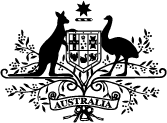The first case of novel coronavirus (2019-nCoV) has been confirmed by Victoria Health Authorities this morning.
The Commonwealth Department of Health is in close contact with Victorian health authorities and has notified the World Health Organization.
The patient, a man from Wuhan, flew to Melbourne from Guandong on 19 January.
Minister for Health Greg Hunt said, “Australia has world-class health systems with processes for the identification and treatment of cases, including isolation facilities in each state and territory, these processes have been activated.”
“Our laboratories have developed testing processes for this novel coronavirus that can provide a level of certainty within a day.”
Australian Chief Medical Officer Professor Brendan Murphy said Victoria had acted swiftly and appropriately.
“Victoria has followed its strict protocols, including isolating the affected person. I understand the patient has pneumonia and is in a stable condition.”
The virus originated in mainland China – the overwhelming majority of cases are there – and the only clear evidence of human-to-human transmission is in the Wuhan region.
Minister Hunt said, “Victorian and Commonwealth authorities will be undertaking “contact tracing” for passengers who travelled on this flight and to provide them with information and advice.”
Australia will continue to monitor the situation closely and continue to act on the best available evidence and advice:
- Overnight, DFAT raised the level of travel advice for Wuhan and Hubei Province in China to ‘level 4 – do not travel’ and has issued a Smartraveller bulletin on the virus outbreak. The advice level for China as a whole has not changed.
- Border measures are already in place to detect travellers who are unwell coming into the country.
- Whilst, the Chinese authorities have now stopped all traffic from Hubei province as an added precaution, the Government is ensuring that all passengers on flights from other parts of China will be met and provided information on arrival.
- Information is also on display at all major international ports around Australia, with instructions on what to do if travellers have symptoms or if symptoms develop.
- Human coronavirus with pandemic potential’ is now a Listed Human Disease under the Biosecurity Act 2015, enabling the use of enhanced border measures.
- The Department of Health has provided primary and community health care workers and Emergency Departments in Australia with updated advice.
- The Chief Medical Officer convened a national teleconference of the Australian Health Protection Principle Committee (AHPPC) this morning to inform State and Territory Authorities and to coordinate further national action.
Professor Murphy said it was important people who had recently arrived in Australia from Wuhan, and those in close contact with them, watch for signs of the coronavirus.
“We don’t know exactly how long symptoms take to show after a person has been infected, but there is an incubation period and some patients will have very mild symptoms,” Professor Murphy said.
“Symptoms include fever, cough, sore throat, vomiting and difficulty breathing. Difficulty breathing is a sign of possible pneumonia and requires immediate medical attention.”
“People who arrive in Australia from an international flight with these symptoms should alert their airline, or a biosecurity officer if they have disembarked.”
If people start getting symptoms in the week after arriving in Australia, they should see a doctor or go to hospital if they are very ill. If they have travelled to Wuhan, they should call ahead to ensure others aren’t put at risk.
The WHO is working with Chinese authorities to learn more about the virus, such as its origins, incubation period and severity, which ranges from very mild to severe.
For more information about 2019-nCoV, visit www.health.gov.au
